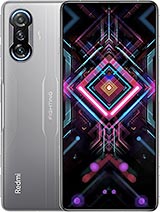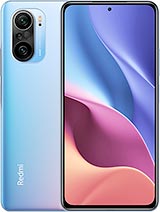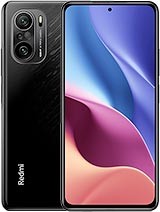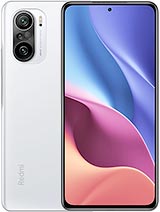Redmi K40 & K40 Pro UNBOXING and DETAILED REVIEW - We ARE the Flagship KILLERS! By TechNick
In, the past few years, Redmi's k series has quickly established itself as being one of the most exciting flagship killers in the industry. This year is no exception, with the new Redmi k40 and k40 pro bringing flagship level specifications to a mid-range price bracket. I have both devices here with me today, and this dual unboxing and extremely detailed review of said devices will consist of comparisons, design, display cameras, software speakers, gaming and finally benchmarks before we get going its worth mentioning that there is a third phone in the lineup, namely the k40 pro plus, which is essentially the k40 pro, but with a different primary camera which will be on sale later this month, prices at the top right hand, corner of the screen reflect the current Chinese RMB exchange rates, and now that we know Redmi haven't cut any corners in terms of the contents of the box. Let's go ahead and unwrap these guys. I have the Damascus black version of the k40 pro on the left hand, side there and the dreamland color on the vanilla k40 on the right hand, side. They both look fantastic in different ways.
I'm really digging the design of the k40 pro with that kind of I don't know it almost looks like it's engraved in it. It's like black flames flowing through. It looks epic and the Redmi k40 the vanilla. One kind of strikes me as a bit of an Oppo Reno 5 pro glow effect, though without those in-depth crystals, it's not quite as classy, it still looks great. Nonetheless, I still think my favorite here is definitely the black version of the k40 pro the vanilla k40, unfortunately, doesn't have the same color.
It just has a glossy back finish with a 4520 William hour battery on both 33 watt, fast charging, no wireless charging on either ip53 certification only on the k40 pro over here, and we do have gorilla glass, 5 on the front and back glass with aluminum frames. Those scratches on the vanilla k40 on this matte finish definitely pick up, and they're really tough to wipe off. That's not apparent on the kf40 pro. Both of them do pick up quite a fair share of fingerprints. However, luckily we have those included silicon cases in the box when slapping them on it kind of takes the flare away from these classy designs, though it still works, it's nice and practical as well.
I'm still not the biggest fan of those little ports. On top of the type c there we do have a power button, which is paired as a fingerprint sensor, non-split volume, rocker, and we do have dual sim on both, though only the k40 pro has dual 5g standby. While the vanilla k40 has a single 5g, we have a type c port at the bottom of both devices with USB 2.0 transfer speeds, and we have dual speakers at the bottom and top and an IR blaster to top things off. Those back cameras aren't the biggest around. They are slightly smaller than the Redmi Note 10 pro I recently reviewed, but a tad bigger than the Motorola edge s, and it does show when slightly wobbling on a flat surface talking about designs.
Here, though, Xiaomi are definitely going with this camera set up for 2021. I am actually digging it over here very similarly, looking to the mi 11, it is very light at 196 grams and very thin at 7.8 millimeters thick. So these backs look absolutely phenomenal. If you ask me at this price point, but what about the displays? Well, they both compared with a 20 by 9 aspect ratio, 6.67 inch, 2.76 millimeter notch, which is a dot display, full HD plus over here, an e4 AMOLED panel with DCR p3, color gamut rating HDR, 10, plus 120 hertz, refresh rate 360, hertz touch sampling rate and a thousand 300 nits peak brightness, comparing the color accuracy to other Xiaomi devices as well as the Motorola. You definitely see that the AMOLED screen is a lot brighter and a lot more clear than the IPS LCD screen on the Motorola, which is pretty much the screen that you get at this price point for flagship killers.
But Redmi have gone all out here with the AMOLED panels, and it also shows in terms of white balance and that crazy, high thousand three hundred, and it's just shy of the mi level you're not going to notice much of a difference and a little higher than the note 10 pro and all three of these devices screens are exactly the same by the way over 120 hertz panels on all the Xiaomi devices here, 90 hertz on the Motorola. It doesn't really show day to day. I still feel- and I always say it: 90 hertz is more than enough in terms of screen. Refresh rates on a smartphone still feels just as smooth but 120. Isn't much of an overkill still feels great in the hand, and it does a great job, especially when gaming at 120 fps, which will get you a little later on ghosting wise.
It is a little better in terms when, comparing to the Motorola, we have loads of different color schemes over here, as you saw with the mi 11 before it, and we also have adaptive colors, which is very similar to apple's true tone display, and we have certain things like super display: HDR enhancement memo, which can jump things up to 120 hertz when watching video and of course we have dark mode as well. Dark mode gets pretty black, and you can also use it in third-party apps and, of course, first party apps as well. It does a great job, no gray areas over here. Nice, deep, dark blacks also have an AMOLED display, thanks to this being a LED panel, and it looks pretty great. You have ones that can change throughout the day.
You also have kaleidoscopes, though not quite as customizable as opposed color is, and we can customize the general one, and you can change the color automatically over time. So it prevents burning on the AMOLED panel strange thing about this AMOLED panel. There is now in display fingerprint sensor. We have a side mounted one which is the same on both devices. This is called an arc fingerprint sensor by Xiaomi.
It's the exact same one that we saw on the Redmi Note 10 pro it's pretty snappy, and I like that. It's not indented, like you see with many physical ones, such as on the Motorola edges, and it's pretty quick. Furthermore, it's a lot quicker than the Motorola over there on par with the mi 11 optical, in display fingerprint sensor, and when we're talking about facial recognition, it's using 2d, unsecured facial recognition using the selfie cam, and it's pretty much the same speed as all other devices once again, a little quicker than the Motorola HS over here and just on par with the Xiaomi mi 11, using the same facial recognition system, both of them have 20, megapixel, f, 2.4, selfie snappers the same on all k40 models over here, and they look pretty much identical. Even the portrait shots look great, no edge detection here and, of course, we can also record selfie video on both devices. The Redmi k40 pro is kept at 1080p 60fps, while the vanilla, Redmi k40, is capped at 1080p 30fps.
So you get that nice silky smooth 60fps on the pro variant of the phone as opposed to the 30 on the vanilla. You also get dual video mode on both phones, and it's really seamless and simple to switch between the back and the front cams, which one you want to focus on most whenever you want to it's really. Epic things are pretty similar. Here we have the same ultra-wide antelope macro at 8, megapixels and 5 megapixels, respectively, on both devices, but the biggest difference, and arguably the biggest difference between these two phones overall is the main sensor. The k40 pro comes with a 64 megapixel IMAX 686 sensors, while the vanilla k40 comes with a 48 megapixel mix 582 sensors, and they both use four to one pixel.
Binning ultra-wide are exactly the same cam. So no doubt they look pretty similar, though the k40 pro looked a tad bit over there, probably because of the processing part of the snapdragon 888. When it comes to the main sensors. You can definitely see that the k40 pro is slightly more clear, a little more detail even when you're going to two times hybrid zoom, using the main camera, not binding, but you also get five times zoom digital and ten times which is unusable on both, but a little better on the k40 pro thanks to the 64 megapixel snapper, when zooming in digitally. You also have macro sensors here, which once again are exactly the same, and we also have portrait mode options on both, but we lack a depth sensor.
I do think the k40 pro once more looks slightly better. Another thing that the k40 pro has that the regular k40 doesn't is 8k 30 fps. The vanilla version is stuck to 4k and 4k 30. That is, while the k40 pro can go all the way up to 4k 60fps for nice smooth videography sessions. We can also zoom in on both cams, and this is when you really see the difference in detail over here between the two main sensors and shooting at 1080p.
Both of them you'll, be happy to hear, can run at 60fps, nice and clear, but once again the main sensor on the k40 pro definitely seems a tad better. Here same thing can be said, with the ultra-wide cameras, though remember they're, exactly the same over here, still slightly brighter on the k40 pro, since it's using a slightly better chipset. Those cameras can be used for something else, though, to measure your heart rate. Strangely enough and comparing it to my galaxy watch, active 2, it's actually not too far, or if we have mini 12 skinned over android 11, no mini 12.5. Yet hopefully it comes soon.
I'm not going to dig too deep into software via you guys know what mini 12 is all about. I've done tons of Xiaomi videos and the software hasn't changed one, but since me y12 became available. We have split screen floating windows, all that jazz. It works seamlessly. It works well, especially with the new chipset.
So I'm pretty happy with it. We also have Google services. This is a china version of this phone. It's only available in China and, yes, you can get g apps. We also have some dynamic wallpapers over here.
Those are the nebula ones, and we also have these super dynamic wallpapers, which work really great. These different transitions. I really like this new geometry, one. I think it looks fantastic, and it's available on both devices over here. The haptics also feel pretty great, pretty much on par with the Redmi Note 10 pro, and we do have dual speakers on both the k40 and code 40 pro.
But how does it stack up against the mi 11's dual home card? And speakers? Hey speakers, sound great, but what about gaming software? Well, we do have game turbo, which we've seen on many Xiaomi devices. We have all the features packed into this, as you would see from a flagship, Xiaomi smartphone, with a screen overlay over there, nice quick shortcuts- I usually use game bench pro to record fps, but it doesn't work on this Xiaomi device, neither of them- and you cannot see the fps in developer options like we've seen in previous Xiaomi devices. So I found this thing called game booster though I don't think it's too accurate we're going to still give it a go over here max settings up on Gandhi impact on both devices k40 pro at the top k40 at the bottom snapdragon 888 on the k40 pro by the way snapdragon 870 on the vanilla, k40 and the k40 is saying 120 fps, which is impossible, since the game is capped at 60. But I have no doubt that they're, both sitting at a very decent 60 fps over there now remember. We also have a higher clock speed on the k40, the vanilla edition at 3.19 gigahertz, as opposed to the 2.84 gigahertz on the Redmi k40 pro, but the k40 pro the snapdragon 888 does indeed have a better multi-core score on certain benchmarks. So, no doubt it's going to perform slightly better in games, we're getting a rock-solid 120 fps ultra settings on dead, trigger 2 over here and playing PUBG before it there's no option for 90 fps.
Yet, though, I'm sure the devs will get into that pretty soon we were getting a solid 60 over there. Unfortunately, we're getting capped at 60 in real racing 3, even though it has an unlimited cap of fps, but I'm sure this will get fixed in the coming months. Another thing to note here is that, while both devices that I have come with eight gigs of lpddr5 ram, the k40 pro does have slightly faster ram at 6400 Mbps compared to the 5500 Mbps of the k40. , we're getting into some temps over here before we get going with the three benchmarks, and the battery percentage. We'll compare this at the end to see which one can perform better in terms of temps and battery drain they're, both rocking through and two versions 8.5.7, then we're going to move on to geek bench version 5.3.2 and, lastly, we're going to land up with 3dmark wildlife, which is just focusing on performance when it comes to graphics and getting to the drain and temperature results. Both devices drained by the exact same percent, seven percent, and they both had the same milliampere permanent reading of 22.6 Williams. When it comes to temps, the k40 pro started off cooler, but they both ended at the exact same temperature, oddly enough 46.6 degrees in Celsius, meaning that the k40 pro added a whopping 18.2 degrees in Celsius. While the vanilla k40 added just 14.2 when it comes to an tutu scores, we have the Redmi k40 pro right at the top there with the snapdragon 888 processing chips and then just below that the vanilla k40 with 661 000 rocking that snapdragon 870 chipsets when it comes to geek bench. Unfortunately, the k40, like many Xiaomi devices before it, crashed before hitting the end results after this test.
I tested it out about 20 times and I could not get it to work. I did get a score online of 1024 single core and 3482 multi-core, which is honestly only slightly less than the k40 pro's snapdragon 888 performance of a thousand 124 single core points and multi-core points.3Dmark wildlife is all about those graphics. The k-40 got in fps of 25.7 34.8 fps on the k40 pro, which is actually higher than the average that I get on my channel on the snapdragon 888, with an average of 33.8 frames per second, the Redmi k40 and k40 pro are undoubtedly in the same league of expensive flagships in terms of build quality and classy design less the extra money, the k40 pro may be a tad better in terms of optics and videography compared to its cheaper brother, but the camera department is where these killers fall short of being true flagships. Another possible dealbreaker for some might be the lack of an in-display fingerprint sensor once unlocked. Both devices are running android 11, but mini 12 is starting to feel a little outdated and unoptimized with the new hardware talking about hardware.
Both phones are extremely smooth thanks to that 120hz display and when paired with their respective snapdragon 888 or 870 chipset crush any games you throw at them, and, let's not forget about that very bright AMOLED display, which houses, one of the smallest punch, hole notches I've ever seen, but for an even cheaper price. You could pick up Redmi's latest note, 10 pro, which has the exact same display and also a better camera setup, but it lacks mostly flagship features. The k40 series has to offer and then there's the Motorola HS, which is a great alternative to the vanilla k40, but it lacks an AMOLED display despite it having the same price tag. Of course, if you have some extra cash to spend, there's always Xiaomi's flagship, the mi 11, which out does the k40 pro with a who plus display and wireless charging. That being said, the k40 pro might not make the cut for flagship status, and it's a tad expensive for the flagship killer segment.
Leading me to think that the entry level k40 is the best buy of the two and possibly even the best bang for buck.2021 has to offer you.
Source : TechNick














![Samsung Galaxy A7 (2018) Unboxing [4K]](https://img.youtube.com/vi/c3UOlxgMjFY/maxresdefault.jpg )













